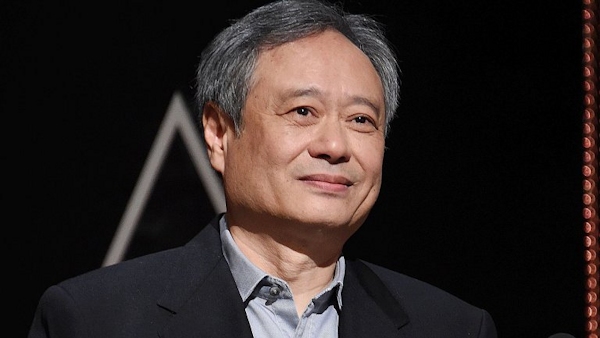[Even though most people won’t see Ang Lee’s new film in 3D, 4K resolution and 120 frames per second, this presentation is said to be historic and a glimpse into the possible future of cinema, and it clearly involves (tele)presence. As reported by Variety, the people who attended said it was “as though I was there,” it provided an “almost VR-like sense of presence,” “it was literally as if you were there,” and was “as immersive and involving an image play as I’ve ever seen.” Coverage in The Verge includes the assessment that “It truly was more like looking through an impossibly-clean window than watching a screen, with the 3D producing no eye strain whatsoever.” See additional coverage in The Hollywood Reporter. –Matthew]

[Image: The Hollywood Reporter]
Ang Lee’s ‘Billy Lynn’s Long Halftime Walk’ First Footage Stuns Viewers at NAB Show
Advanced format leaves attendees praising both tech and the film itself
David S. Cohen, Senior Editor, Features
April 16, 2016
Any worries Ang Lee had about how the technologists at the Future of Cinema Conference would receive his presentation of footage from “Billy Lynn’s Long Halftime Walk” were laid to rest on Saturday.
The presentation of an 11-minute sequence from the film in its native format (3D, at 4K resolution and 120 frames per second for each eye) electrified the conference in Las Vegas, leaving even experienced pros grasping for superlatives to convey what they had seen. Their praise wasn’t reserved for the technology, but for the film itself as well.
Former Disney exec, now Society of Motion Picture Engineers (SMPTE) executive Howard Lukk told Variety moments after emerging from a showing “I’m stunned. It’s a really powerful film, and a really clear presentation. It’s the best 3D I’ve ever seen in my life. The 3D is really, really good on this thing. Absolutely amazing.”
Visual effects supervisor Dennis Muren was in the very first screening, along with “Avatar” producer Jon Landau, high-frame-rate pioneer Douglas Trumbull and numerous other VIPs. Muren, a friend of Lee’s since they worked together on “Hulk,” told Variety, “I thought it was amazing and incredibly emotional. I started to talk to Ang about the technology stuff and said ‘What the heck am I talking about? It’s an emotional film. I’m totally with this guy and the experience he’s going through, as though I was there, at the moment, looking at it.’ Muren, a fan of high frame rate cinema, said of the 120fps format, “You can see the difference. And feel the difference. It’s really about feeling.”
The big question many had coming in was: Will it look like television. The answer to that was “yes and no.” Several people felt that for the first few seconds, they thought it looked like a TV soap, but it quickly began to feel like nothing they’d seen before.
The sequence chosen for viewing is 11 minutes intercutting an Iraq War battle with a celebration of the soldiers at an NFL game in Dallas. The experience of the soldiers at home, as performers (almost props) in a celebration in a darkened stadium, contrasts with their firefight and hand-to-hand combat of the Iraq scenes.
The clarity and the almost VR-like sense of presence it creates gives the battle sequences a profound impact. One viewer said after emerging, “Every American ought to see this, this way; then we wouldn’t have any wars for a while.”
Dolby VP of technology Pat Griffiss, who was in the first screening, called the footage “Absolutely spectacular.”
“When it first started up … I thought ‘Oh, this is going to look like a video newsreel.’ But it was in 3D, the realism and the brightness and the frame rate, it was literally as if you were there.” Griffiss added, “This is undoubtedly the best 3D I’ve ever seen.”
Former Sony tech executive George Joblove, now an independent consultant, agreed about the you-are-there feeling of the video, but wasn’t entirely sure that would be a plus. “I’m trying to decide whether it’s my bias, as someone having grown up in the 20th century, and being used to the idea that narrative filmmaking should be at 24 frames per second to let you know you’re watching a story. I wonder whether people younger than I am will have that bias. I will be curious to see what the public reaction to this will be, because it definitely makes you feel like you’re there.”
Andrew Stucker, also a former Sony exec turned consultant, said “I was extraordinarily impressed. I didn’t see a movie-like image, but I saw something entirely different. It was as immersive and involving an image play as I’ve ever seen.” Asked if it looked like video, he said “Not really. When you first look at it, you think, ‘Oh, that’s video.’ But it’s an extension beyond video. Whatever that is, I’m not entirely sure, but it’s more than video.”
By the time Lee took the panel to discuss the making of the film, there was a palpable sense of history being made. However that excitement was tempered by the knowledge that most of the public is unlikely to be able to see the film in this form. It was a shown on dual-projector setup specially assembled for the show, using high-end Christie projectors and Dolby 3D. Without dual projectors, no commercial movie theaters will be able to show 3D/4K/120. Even with dual projectors, the best format likely to be available is 3D/4K/60.
But still, at a Future of Cinema Conference, a glimpse of the future is what the attendees wanted; Sony and Lee gave it to them, and then some. Chief technology officer Jim Whittlesey of London-based Eikon Group, agreed that the footage felt like video at first bent beyond a video look. “I thought the images were absolutely stunning, some of the most beautiful images you’ll ever see,” he said. “This is what cinema should be.”